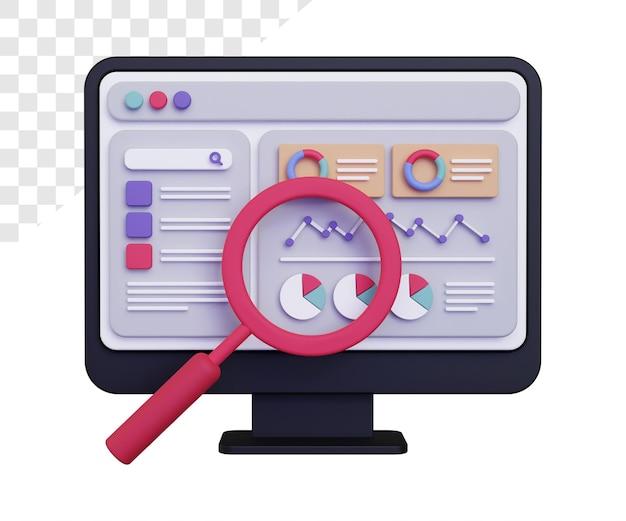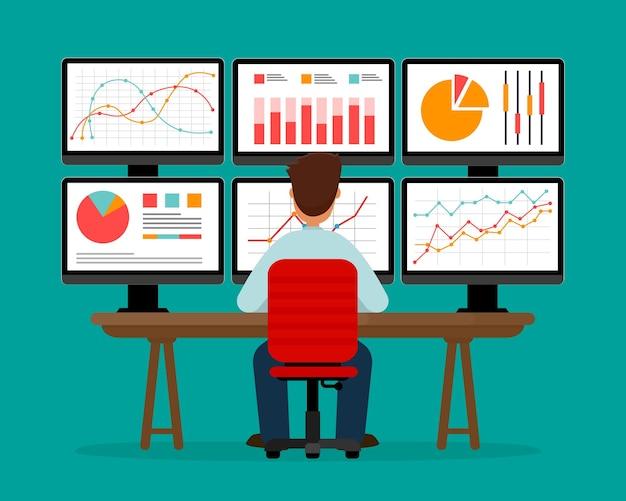Statistics plays a vital role in various fields, including computer science. With the advancement of technology and the increasing amount of data we generate, understanding statistical concepts has become crucial for computer scientists. In this blog post, we will delve into the application of statistics in computer science and explore how it helps in analyzing and interpreting data.
From data mining to machine learning algorithms, statistics provides the foundation for many essential techniques in computer science. It helps in understanding patterns, making predictions, and drawing meaningful conclusions from collected data. Whether it’s examining large datasets, testing hypotheses, or optimizing algorithms, statistical knowledge is indispensable in the world of computer science.
Join me as we explore different applications of statistics in computer science and understand why it is a fundamental skill for both aspiring and seasoned computer scientists. Through practical examples and real-life scenarios, we will see how statistics shapes this ever-evolving field. So, grab a cup of coffee and let’s dive into the intriguing world of statistics in computer science!
What is the Application of Statistics in Computer Science
Welcome to the fascinating world where numbers and computers collide! In this section, we’ll delve into the marvelous applications of statistics in the realm of computer science. Buckle up, because we’re about to embark on a statistical journey through the digital universe.
Predictive Analytics: Reading the Crystal Ball of Data
Imagine being able to predict the future, minus the crystal ball and mystic robes. That’s the power statistics brings to computer science through a technique called predictive analytics. By analyzing past patterns and trends in data, statisticians can make highly educated guesses about what might happen in the future.
Machine Learning: When Computers Become Math Wizards
Ever wondered how your smartphone can recognize your voice or how Netflix knows which shows you might binge-watch next? Well, you can thank statistics for that! Machine learning, a subset of artificial intelligence, uses statistical algorithms and models to enable computers to learn from data and make intelligent decisions autonomously.
Data Mining: Uncovering Hidden Gold Nuggets
Just like prospectors sifting through gravel in search of gold, statisticians use data mining to extract valuable information from vast sets of data. Equipped with statistical tools, they can discover hidden patterns, trends, and relationships that were hiding just beneath the surface.
Quality Control: Keeping Errors in Check
No software or digital product can escape the occasional bug, but statistics comes to the rescue with quality control techniques. By applying statistical methods, computer scientists can analyze errors, defects, and anomalies in software development, ensuring that only the highest-quality code makes it to our screens.
Big Data: Wrangling the Beast
The rise of the internet and digital technologies has resulted in an explosion of data. With this deluge of information, computer scientists turned to statistics to tame the mighty beast known as big data. Statistical techniques allow us to store, process, and extract insights from massive datasets, leading to better decision-making and innovation.
Cybersecurity: Shielding the Digital Fort
In the digital world, the battle between hackers and cybersecurity experts is endless. Statistics plays a vital role in the ongoing fight for digital safety by identifying patterns of suspicious activities and developing statistical models to detect and prevent cyber threats. It’s like having a superhero for your computer systems!
Who knew statistics could be such a computer science superhero? From predictive analytics to machine learning, statistics forms the backbone of many groundbreaking applications in the realm of computers. So the next time you marvel at the digital wonders and technological advancements surrounding us, take a moment to appreciate the unsung hero quietly crunching numbers in the background: statistics.
FAQ: What is the application of statistics in computer science
How do you calculate the percentage of something in computer science
Calculating percentages is a useful skill, even in the world of computer science. To determine the percentage of something, you can divide the part by the whole and multiply the result by 100. For example, if you want to find the percentage of students who passed a programming exam out of a total of 100 students, divide the number of students who passed by 100 and then multiply the result by 100. Simple, right?
Is probability important in the realm of computer science
Absolutely! Probability plays a crucial role in computer science. It helps us make educated guesses about the likelihood of an event occurring. Whether it’s predicting network traffic, analyzing data patterns, or designing algorithms, probability provides valuable insights and guides decision-making processes. So, next time someone tells you that understanding probability is pointless, you can confidently tell them otherwise!
What are the real-world applications of probability in engineering
Probability is widely used in engineering to assess risks, analyze reliability, and optimize systems. Engineers rely on probability models to predict failures in machinery, evaluate different design alternatives, and determine the probability of success or failure in complex projects. In short, probability is like the secret sauce that engineers use to enhance their problem-solving skills and minimize the element of surprise.
What’s the formula for calculating probability
Ah, probability formulas! They can be a bit intimidating at first, but fear not, I’m here to simplify things for you. The probability of an event occurring is calculated by dividing the number of favorable outcomes by the total number of possible outcomes. So, the formula goes like this:
P(event) = Number of favorable outcomes / Total number of possible outcomes
With a little practice, you’ll be a probability pro in no time!
Can a percentage be more than 100
Well, in theory, a percentage represents a proportion out of 100. So, it’s not possible for a percentage to be greater than 100. However, if we’re talking about exceeding expectations or going above and beyond, then sure, we can have achievements beyond 100%! But when it comes to mathematics and statistics, sticking to the 100% limit is a good rule to follow.
How is probability used in the field of medicine
Probability is an essential tool in the medical field. Medical professionals use probability to assess the likelihood of disease occurrence, determine treatment effectiveness, evaluate diagnostic tests, and even predict patient outcomes. From calculating the probability of a positive COVID-19 test result to estimating the effectiveness of a new drug, probability keeps doctors and scientists on top of their game when making important decisions.
How would you explain probability to students
Explaining probability to students can be quite an adventure! I like to describe it as the “art of guesstimation.” You see, probability helps us make educated guesses about the likelihood of something happening. It’s like predicting the weather for tomorrow. By analyzing previous data, current conditions, and a dash of intuition, we can make an informed guess about whether we’ll need an umbrella or not. Probability is all about understanding chances, uncertainties, and making smart predictions, all while having a bit of fun along the way!
What are some real-life applications of probability
Ah, the wonderful world of probability extends far beyond the realms of math and science. It’s everywhere around us! When you’re flipping a coin, rolling a dice, or even playing a game of cards, probability is at play. But it doesn’t stop there! Probability also finds its way into fields like finance, weather forecasting, insurance, sports analysis, and even gambling. So, next time you’re calculating your odds at the casino, remember that probability is the math whispering in your ear.
Do you simplify things in probability
Absolutely! In probability, we embrace the art of simplification. You see, probability can sometimes get a bit complex with all those formulas and calculations. But fear not, we’re here to make things easier for you. By breaking down problems, visualizing scenarios, and focusing on the essentials, we can simplify probability and make it more approachable for everyone. So, let’s simplify away and make probability our trusty sidekick in understanding the world around us!
What are some applications of statistics in computer science
Statistics and computer science go together like peanut butter and jelly. Statistics helps computer scientists make sense of data, uncover patterns, and draw meaningful insights. Whether it’s analyzing user behavior, optimizing algorithms, or designing machine learning models, statistics provides the backbone for making informed decisions. So, the next time you’re diving deep into the world of data analysis, statistics will be your guiding light!
Why is probability important in the field of genetics
Ah, the fascinating world of genetics! Probability plays a vital role in understanding genetic inheritance and predicting traits. It helps us assess the likelihood of certain genetic diseases being passed down from parents to their offspring. Probability also enables geneticists to estimate the chances of specific genetic mutations occurring and aids in population genetics studies. So, if you ever wondered how probability shapes our understanding of genetics, just remember that it’s the DNA of probability!
How can you calculate percentages quickly
When you need to calculate percentages in a jiffy, here’s a nifty trick to speed things up. Start by converting the percentage into a decimal, which is as simple as dividing it by 100. Then, multiply the decimal by the number you want to find the percentage of. Voila! You’ve got your answer. This handy method saves you from fumbling with percentages and helps you conquer calculations in no time.

